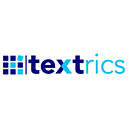We can find unstructured data in almost any text in the digital world, such as emails, social media conversations, chats, etc. Tagging, also referred to as annotation, is a rapidly evolving technology that classifies and clusters data for analysis.
Unstructured data is information that has not been structured in a predefined manner. Every industry requires analysis of such data, in short, wherever data is involved.
The increased use of digital applications and services has given rise to data proliferation. Businesses and governments continue to generate enormous volumes of data at an unprecedented rate. At the same time, usability problems arise from attempting to store and manage that data.
Manually processing, organizing, and preparing such data for analysis can be very difficult, inaccurate, and expensive.
- What is Tagging?
- Why should you use tagging for effective text analysis?
- How is the business world linking tagging to analytics?
- What role does tagging play in your business?
What is Tagging?
Tagging or Text Tagging is the process of adding tags or annotation to various components of unstructured data. It is an essential step in the process of preparing free-form data for further analysis. Usually, we can do this manually or automatically.
Both simple and complex computer programs can perform auto-tagging.
In simple programs, rules and word lists are used to tag content appropriately when the most critical parameters are known. However, complex systems use advanced natural language processing and machine learning to provide higher accuracy and efficiency for large data sets.
For example, Textrics works on N-Gram methods of machine learning in which we try to identify the top 3 words or terms that bear more weightage or value in a sentence. Therefore, the results obtained are highly accurate and efficient than simple manual tagging.
Why should you use tagging for effective text analysis?
When we prepare unstructured data for analysis, we find that tagging occurs at a more granular level than categorization.
Therefore, it is capable of offering additional benefits in terms of insight.
Tagging works in conjunction with predictive analytics tools to grow and refine a knowledge base for unstructured data mining.
We can expand the text tagging system over time. The taxonomy tends to develop to allow more data to be structured with tags. As analysis is performed on the structured data, we can use the resulting intelligence to refine the tagging system further.
How is the business world linking tagging to analytics?
As enterprises today seek significant direct ROI from unstructured data, uncovering more and more information about user behaviour has become very important.
Tagging has been slotted relatively seamlessly into the workflow as the concept is simple enough to work with many BI systems. The world of web analytics has already integrated tag management software into its systems.
Popular examples include Google Analytics and Web Trends.
Tagging recognizes existing terms of importance and predicts when and where we should implement new forms of tagging.
Many experts agree that it’s all part of a continuous system. The analysis itself is fed back into further experimentation with multivariate testing (MVT). We can add more contextually relevant terms, which are clustered around core concepts.
Hence, the most crucial benefit is that this kind of approach can reveal data that organizations didn’t even know they had.
Let’s think about it. Would all this be possible manually? Of course not.
What role does tagging play in your business?
Tagging can be used to integrate structured and unstructured data to build a complete data warehouse.
Such data can offer an all-encompassing view of an organization’s data assets for building business intelligence and decision-support applications that are based on holistic, all-inclusive enterprise data.
So, what can you do with such vast amounts of data?
- Gain Market and Competitive Intelligence: The daily news articles and reports are a vast collection of unstructured data that is difficult and time-consuming to review and analyze. It is essential to study as much quality information as possible in a limited amount of time. Tagging identifies the entities and tags them. Thus, by adding structure to unstructured data, you can make it more amenable to query and search.
- Obtain Product Performance Insights: Analysing large volumes of warranty claims data is a significant concern for companies. If a recurring problem is observed, the tagging system sifts through the data. It examines the customer and technician comments for patterns or clues that can identify the cause of the problem.
To summarise, the benefits of using tagging before data analysis are significant for any business. Reading long sentences and noting keywords is simply not possible through large volumes of data.
Textrics offers you the most effective results by enabling you to:
- Search smarter and find quick answers
- Discover insights and access content in an automated way
- Scale-up even as data volumes grow to handle opportunities, and
- Manage potential risks easily
It’s time to take your business to new heights! We are here to guide you through every step.
Simply try our free demo or get in touch with our team of experts to know more.
